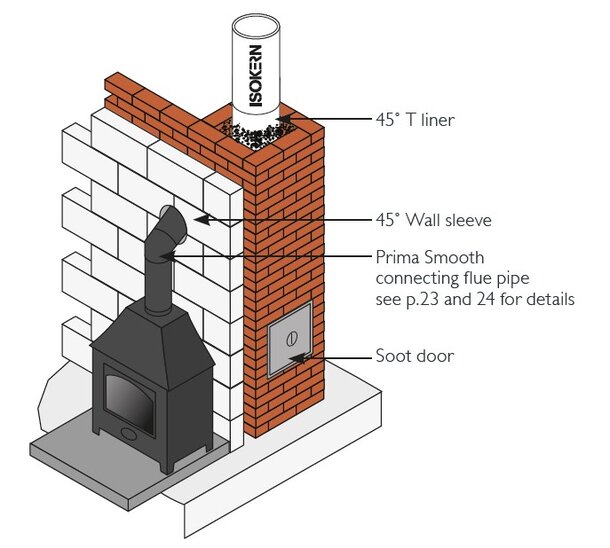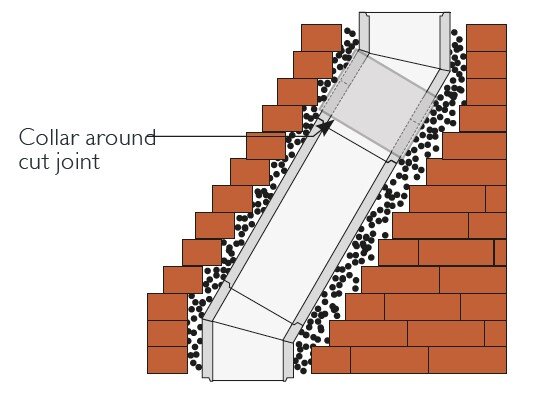If bends are required in the chimney make sure adequate support is provided and always backfill with light expanded clay aggregate insulation mix. Liners can be cut between bends to achieve a required offset distance. A steel collar as well as lip glue must be used for any cut joints. A maximum of 2 complete offsets (4 bends) are allowed per chimney and the angle must not be greater than 45˚ from the vertical.
You must provide adequate clearance from combustible material in accordance with Building Regulations Combustible materials must be 200mm from the inner surface of flue liner or 40mm from the outside of the masonry chimney unless it is a floorboard, skirting board, dado or picture rail, mantel-shelf or architrave.





